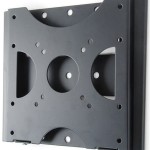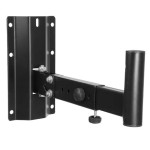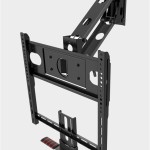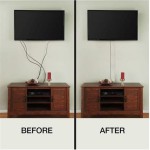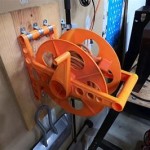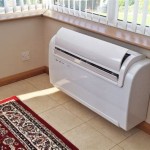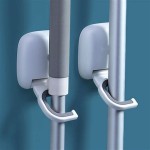Betta Fish Tanks: Exploring the Wall Mount Option
The Betta splendens, commonly known as the Betta fish or Siamese fighting fish, is a popular choice for aquarium enthusiasts due to its vibrant colors and relatively low maintenance requirements. While traditional aquarium setups involve placing tanks on stands or furniture, a growing trend involves mounting Betta tanks on walls. This article examines the advantages, disadvantages, design considerations, and practical aspects of wall-mounted Betta fish tanks.
Advantages of Wall-Mounted Betta Tanks
Wall-mounted Betta tanks offer several benefits over traditional aquarium setups. One primary advantage is space optimization. In smaller living spaces, every square foot of floor space is valuable. A wall-mounted tank eliminates the need for a separate stand or dedicated furniture, freeing up floor space for other uses. This feature is particularly appealing in apartments, dorm rooms, or offices where space is limited.
Aesthetically, wall-mounted tanks can create a visually striking display. The floating effect of a tank attached to the wall can enhance the room's overall design, transforming a simple aquarium into a focal point. The sleek, minimalist design of many wall-mounted tanks complements modern interior decor, providing a clean and sophisticated look. Moreover, the higher vantage point can offer a more engaging viewing experience, allowing observers to appreciate the Betta's movements and colors from a different perspective.
Safety is another consideration that can favor wall-mounted tanks. When properly installed, a wall-mounted tank can be more stable than a tank placed on a potentially wobbly or unstable stand. This stability reduces the risk of accidental spills or the tank toppling over, which can be particularly important in households with children or pets. The elevated position also helps keep the tank out of reach of small children or pets, minimizing the risk of disturbance or damage to the aquarium and its inhabitants.
Finally, wall-mounted tanks can offer a degree of customization and flexibility. They can be arranged in various configurations, such as a single statement piece or a series of smaller tanks arranged in a visually appealing pattern. This allows aquarists to create a unique and personalized display that reflects their individual style and preferences. The ability to adjust the height and placement of the tanks also provides greater control over the viewing angle and overall aesthetic impact.
Disadvantages and Challenges of Wall-Mounted Betta Tanks
Despite their advantages, wall-mounted Betta tanks also present several challenges. The primary concern is weight. Water is heavy, and even a small Betta tank can weigh a significant amount when filled. The wall must be structurally sound enough to support the weight of the tank, water, substrate, decorations, and any equipment, such as filters or heaters. This often requires reinforcement or the use of specialized mounting hardware designed for heavy loads. Failing to properly assess the wall's load-bearing capacity can lead to catastrophic failure, resulting in damage to the tank, the surrounding area, and potentially injury.
Installation can be complex and may require professional assistance. Accurately locating studs or using appropriate anchors is crucial for ensuring the tank's stability. Incorrect installation can compromise the structural integrity of the wall and the tank, increasing the risk of accidents. Furthermore, running electrical cords for lights, filters, or heaters can be challenging and may necessitate concealing the wires within the wall to maintain a clean and aesthetically pleasing appearance. This may require additional expertise and potentially involve hiring an electrician.
Accessibility for maintenance is another important consideration. Performing regular water changes, cleaning the tank, and maintaining the equipment can be more difficult with a wall-mounted tank, especially if it is positioned in a hard-to-reach location. The need to lift water-filled containers to and from the tank can be physically demanding and may increase the risk of spills. Careful planning and the use of appropriate tools, such as siphon hoses and lightweight buckets, are essential for simplifying maintenance tasks.
Temperature regulation can also be a concern with wall-mounted tanks. Walls can be subject to temperature fluctuations, particularly if they are exterior walls or located near windows. These fluctuations can affect the water temperature in the tank, potentially stressing the Betta fish. Insulating the tank or using a reliable heater can help mitigate these temperature swings and maintain a stable and comfortable environment for the fish. Monitoring the water temperature regularly is crucial for ensuring the Betta's well-being.
Design and Construction Considerations for Wall-Mounted Betta Tanks
The design and construction of a wall-mounted Betta tank require careful consideration of several factors. The size and shape of the tank should be appropriate for the available wall space and the number of Betta fish it will house. A general guideline is to provide at least 2.5 gallons of water per Betta fish to ensure adequate swimming space and water quality. The tank should be made of durable and non-toxic materials, such as glass or acrylic, that can withstand the weight of the water and resist corrosion. The thickness of the material should be sufficient to prevent cracking or leaks.
The mounting system should be robust and reliable, capable of supporting the weight of the filled tank. This may involve using heavy-duty brackets, anchors, or a combination of both. The mounting hardware should be specifically designed for wall mounting and should be rated for the appropriate weight capacity. It is essential to follow the manufacturer's instructions carefully when installing the mounting system to ensure its stability and safety.
The aesthetic design of the tank should complement the surrounding decor. This may involve choosing a tank with a specific shape, color, or finish that blends seamlessly with the room's overall style. Incorporating natural elements, such as rocks, driftwood, and live plants, can enhance the visual appeal of the tank and provide a more stimulating environment for the Betta fish. However, it is important to avoid overcrowding the tank, as this can restrict the fish's swimming space and negatively impact water quality.
Consideration should be given to the placement of the tank in relation to light sources. Direct sunlight can cause excessive algae growth and overheating, which can be detrimental to the Betta fish. Placing the tank away from direct sunlight or using artificial lighting can help maintain a stable and healthy environment. The lighting should be appropriate for the tank size and the needs of the plants, if any. LED lighting is a popular choice due to its energy efficiency and long lifespan.
Practical Aspects of Maintaining a Wall-Mounted Betta Tank
Maintaining a wall-mounted Betta tank requires a consistent routine that includes regular water changes, filter maintenance, and monitoring of water parameters. Partial water changes, typically 25-50% of the tank volume, should be performed weekly to remove accumulated waste and maintain water quality. The frequency and volume of water changes may need to be adjusted based on the size of the tank, the number of fish, and the feeding schedule.
The filtration system should be cleaned or replaced according to the manufacturer's instructions. A filter helps remove debris and toxins from the water, keeping it clean and healthy for the Betta fish. Different types of filters are available, including sponge filters, internal filters, and hang-on-back filters. The choice of filter will depend on the size of the tank and the desired level of filtration.
Water parameters, such as temperature, pH, ammonia, nitrite, and nitrate levels, should be monitored regularly using test kits. Maintaining optimal water parameters is crucial for the health and well-being of the Betta fish. The ideal temperature range for Betta fish is 78-82°F (25-28°C). The pH should be maintained between 6.5 and 7.5. Ammonia and nitrite levels should be kept at zero, and nitrate levels should be kept as low as possible.
Feeding the Betta fish a balanced diet is essential for its health and vitality. Betta fish are carnivores and should be fed a diet that is high in protein. Commercial Betta pellets or flakes are a convenient and nutritious option. Live or frozen foods, such as bloodworms, brine shrimp, and daphnia, can be offered as a supplement to provide variety and stimulate the fish's natural feeding behavior. Overfeeding should be avoided, as it can lead to water quality problems and obesity. Feeding the fish only as much as it can consume in a few minutes is a good practice.
Observing the Betta fish regularly for signs of illness or stress is important. Common signs of illness include lethargy, loss of appetite, fin rot, and unusual behavior. If any signs of illness are detected, it is important to take prompt action, such as isolating the fish in a quarantine tank, adjusting the water parameters, or administering medication. Consulting with a veterinarian or experienced aquarist can provide valuable guidance on treating sick Betta fish.

Modern Betta Fish Tank Aquarium Desktop Or Wall Mounted Etsy

Hanging Wall Mounted Fish Bowl Betta Tank Aquarium Decor Plant Bubble

Wall Fish Bowls Bubble Hanging Clear Acrylic Betta Tank Mounted Aquarium Plant Pot Decoration Planter

Legendog Wall Mounted Aquarium Tank 1 Gallon Betta Fish Bowl Hanging Aquariums Clear Acrylic Bubble Tanks Portable Plastic Fishtank Waterfall For

Qumonin Hanging Betta Tank Wall Mount Aquarium Home Decor

Twins Wall Mounted Fish Bowl Ii Hanging Plant Pot For Decor Round Ends Aquarium Tank In India

Wall Fish Bowls Bubble Hanging Clear Acrylic Betta Tank Mounted Aquarium Plant Pot Decoration Planter

Handmade Claws Art Stained Glass Mosaic Fish Tank Wall Mount Betta Bowl Etsy

Modern Betta Fish Tank Aquarium Desktop Or Wall Mounted Etsy

Dhgate Com Acrylic Plexiglass Fish Bowl Wall Hanging Aquarium Tank Aquatic Pet S Mount For Betta

